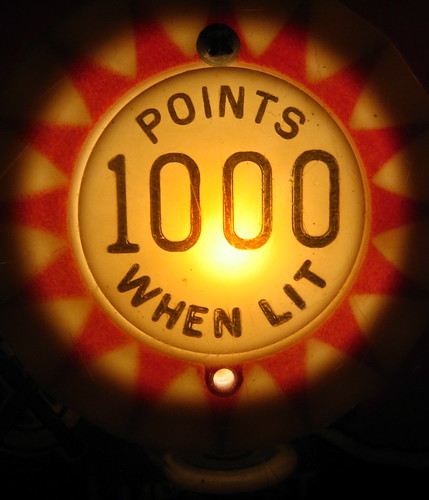 I've had a few discussions with people recently regarding scores. One local winemaker commented that I just describe the wines, I don't make recommendations as to whether they are good or bad. So I've decided to change that. But how?
I've had a few discussions with people recently regarding scores. One local winemaker commented that I just describe the wines, I don't make recommendations as to whether they are good or bad. So I've decided to change that. But how?The most popular rating metric is of course the 100 point system. My personal view is that it was an interesting idea, but it's failed miserably. We can talk details some other time, but when you read tasting notes that say "Unpleasant, borderline undrinkable. 87 points" you can see that there's a problem. Wes Barton summed it up best; it's no longer a 100 point scale, it's a 5 point scale. Just subtract 89 from everyone's score.
Another option is the system that competitions use, of Bronze, Silver and Gold. In that system, Bronze equates a score of 80-84 ("Good") on the 100 point scale. Silver is 85-90 ("Very Good to Excellent") and 90+ is Gold ("Outstanding to Extraordinary"). What I find interesting about that system is that a winery who would scarcely admit they got an 81 score from any major publication will announce their Bronze medal with pride. I think the reason for that is because people equate a Bronze medal with third pace.
I was toying with the idea of adopting a 3 or 5 point scale, but then I realised that ratings come down to two simple questions: Would I buy it, and do I think it represents good value for money? This is a system that is used by Rusty Gaffney in the Pinot File, among others. So from now on I plan to note special wines as Recommended or Value - or both. No fancy icons, for now at least, and we'll see how it goes. Would this be helpful to you as a reader and wine buyer?
As ever, your comments are appreciated.




3 comments:
Hi Dave,
For as ubiquitous as the 100-point scale is, it sure has a lot of detractors. Personally, at this stage in my wine exploration, I feel that numerical ratings are a useful shorthand to see if I want to read the accompanying tasting note.
If the 100-point scale has failed because too many give high scores for mediocre wines and every wine is above average, that's a failing of individual critics- not the system. Don't you think?
I personally have a very hard time rating wines made by people I know on any numerical scale. I'm just too mindful of hurting someone's feelings.
If you don't want to use a numerical system, the "recommended"/"value" sound like a useful alternative to me.
Hope you have a good weekend!
Hi Dave,
I use a point system combined with value. That is, I might give a Brunello 89 pts, but an "OKV", or OK Value. In contrast, a Rosso do Montalcino might get that same 89 pts but be VGV, very good value. This gives my readers my interpretation of how good the wine was within its class as well as how good of a value it is overall. I designate:
PV - poor
OKV -ok
GV - good
VGV - very good
OV - outstanding
I don't think my sytem is perfect, but I think it works well enough. In the end, it's the text that I find most informative.
Something I was reading in Charles Sullivan's "A Guide to California Wine" made it sound like the Gold/Silver/Bronze was originally 1st/2nd/3rd. At least that's how it was in the State Fair in the '40s.
Your quote of me was my critique of a specific person's abuse of the 100 point scale, which he verified. I think most people have a pretty good understand of it.
When I first got into wine, I developed a star scale while correlated to value. I think it's a good exercise. I started with 0 to 4 stars, then added a minus and a 5th star. So, minus meant unpleasant to drink. Zero was drinkable, but not worth paying for. I thought about this again when the '98 Monte Bello came out. I thought a fair price for what it was would be about $20.
Post a Comment